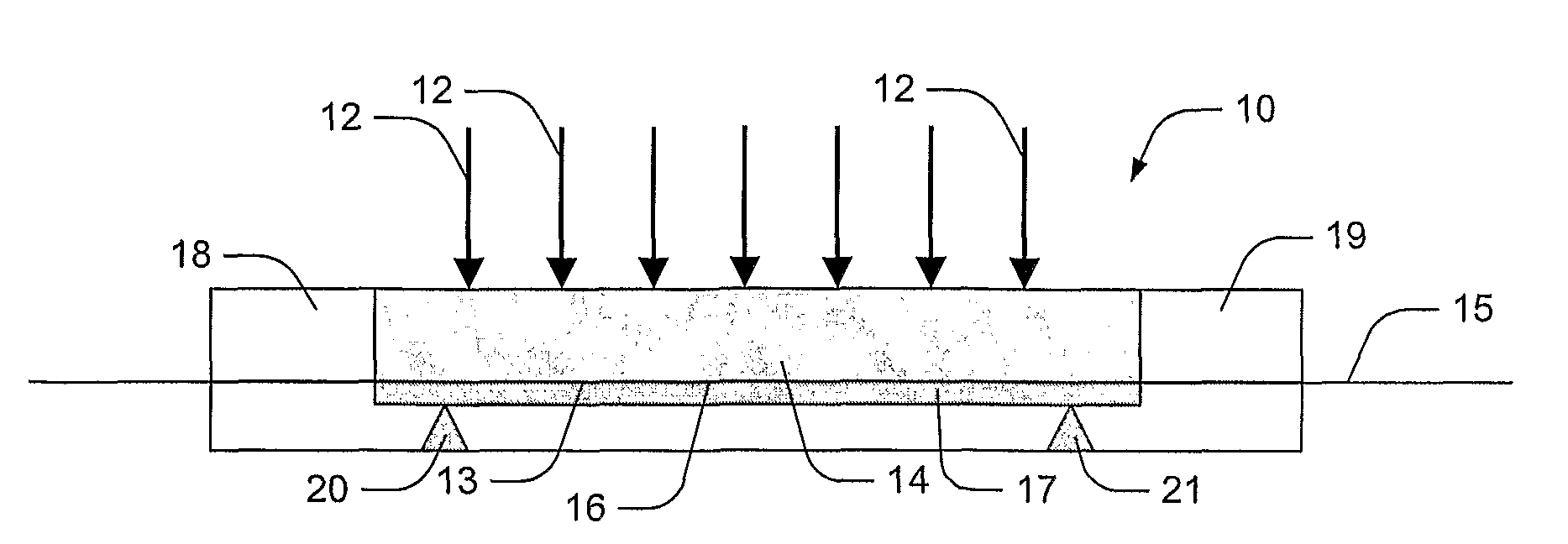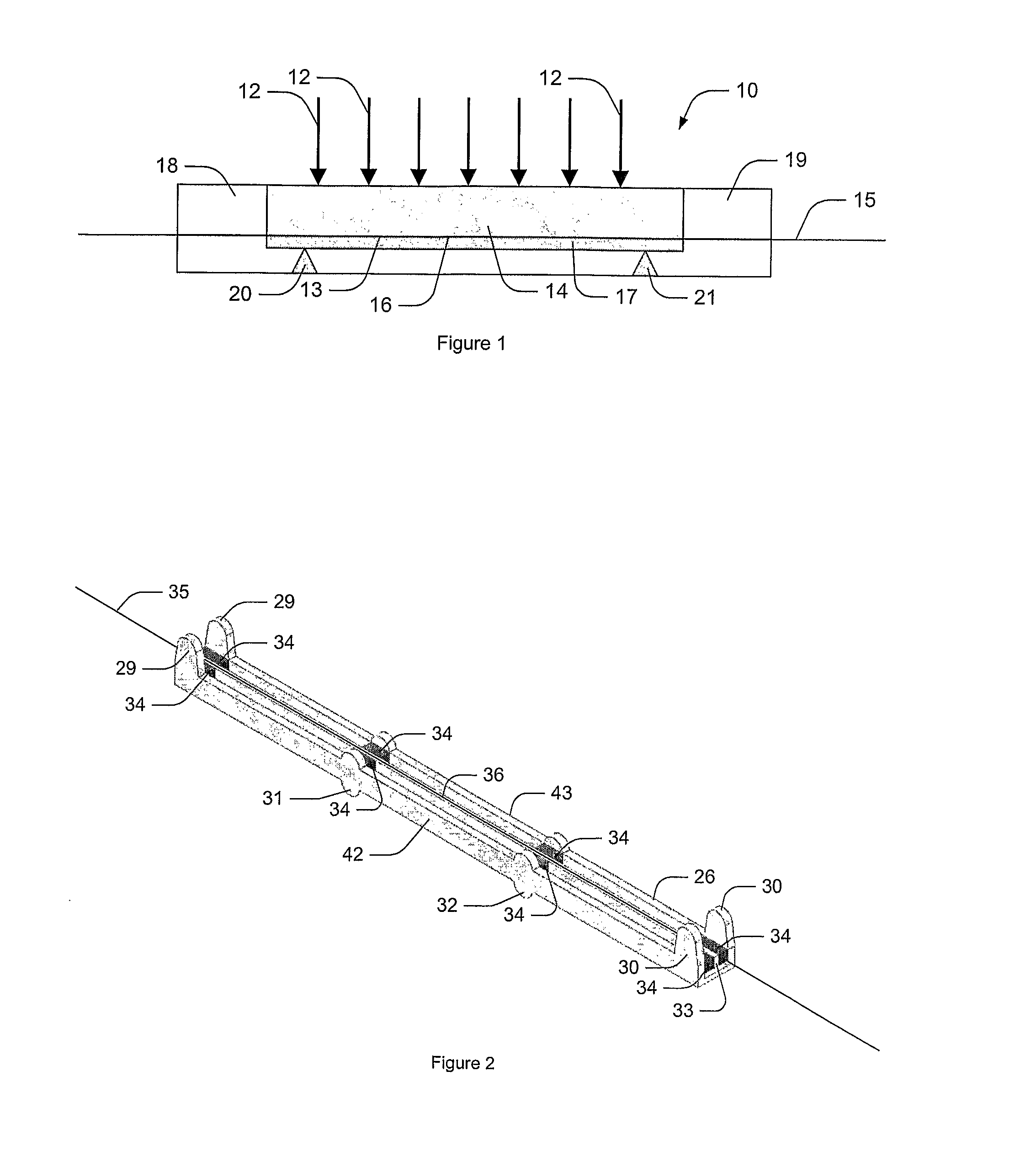Mechanically filtered hydrophone
a hydrophone and filtering technology, applied in the field of pressure sensors, can solve the problems of reducing the quality of performance of prior art hydrophones deployed at depth, affecting the performance of hydrophones, and affecting the quality of performance of prior art hydrophones, so as to achieve the effect of maximising the bending of the bendable member
- Summary
- Abstract
- Description
- Claims
- Application Information
AI Technical Summary
Benefits of technology
Problems solved by technology
Method used
Image
Examples
first embodiment
[0028]Referring to the drawings, the hydrophone 10 as illustrated in FIG. 1 is adapted for immersion in a liquid body, which is typically the ocean. In usage the hydrophone 10 is subject to the pressure exerted by the liquid body, which typically consists of a depth-dependent static pressure and a dynamic pressure. As noted above, at depth the static pressure is typically many orders of magnitude greater than the dynamic pressure, however it is the dynamic pressure that is usually required to be sensed by the hydrophone. The pressure is diagrammatically represented as impacting upon the hydrophones in FIGS. 1 and 4 by arrows 12 and 41 respectively.
[0029]The hydrophone 10 includes a pressure-bearing element 11 for exposure to the liquid body. In the embodiment illustrated in FIG. 1, the pressure-bearing element 11 is in the form of a membrane. A motion sensor 13 is spaced apart from the pressure bearing element 11, and a dilatant coupling material 14 is disposed intermediate the pres...
second embodiment
[0043]Components of a hydrophone 25 are illustrated in FIGS. 2 to 4. This fibre laser hydrophone 22 includes a first elongate bendable beam 26 adapted to bend in response to the pressure as exerted by the liquid body in which it is immersed. As shown in FIG. 4, the first bendable beam 26 is disposed within a housing consisting of first and second housing components 27 and 28 respectively. The static and dynamic pressures of the liquid body are exerted upon the exterior surfaces of the housing components 27 and 28, as illustrated by the arrows 41 of FIG. 4.
[0044]The first elongate bendable beam 26 includes first and second projections 29 and 30 respectively disposed at each opposed end of the beam 26. These projections 29 and 30 extend towards the first housing component 27 for engagement with the internal surface of this housing component 27. This mechanically transmits movements from the first housing component 27 to the first elongate bendable beam 26 that substantially correspond...
PUM
 Login to View More
Login to View More Abstract
Description
Claims
Application Information
 Login to View More
Login to View More - R&D
- Intellectual Property
- Life Sciences
- Materials
- Tech Scout
- Unparalleled Data Quality
- Higher Quality Content
- 60% Fewer Hallucinations
Browse by: Latest US Patents, China's latest patents, Technical Efficacy Thesaurus, Application Domain, Technology Topic, Popular Technical Reports.
© 2025 PatSnap. All rights reserved.Legal|Privacy policy|Modern Slavery Act Transparency Statement|Sitemap|About US| Contact US: help@patsnap.com



